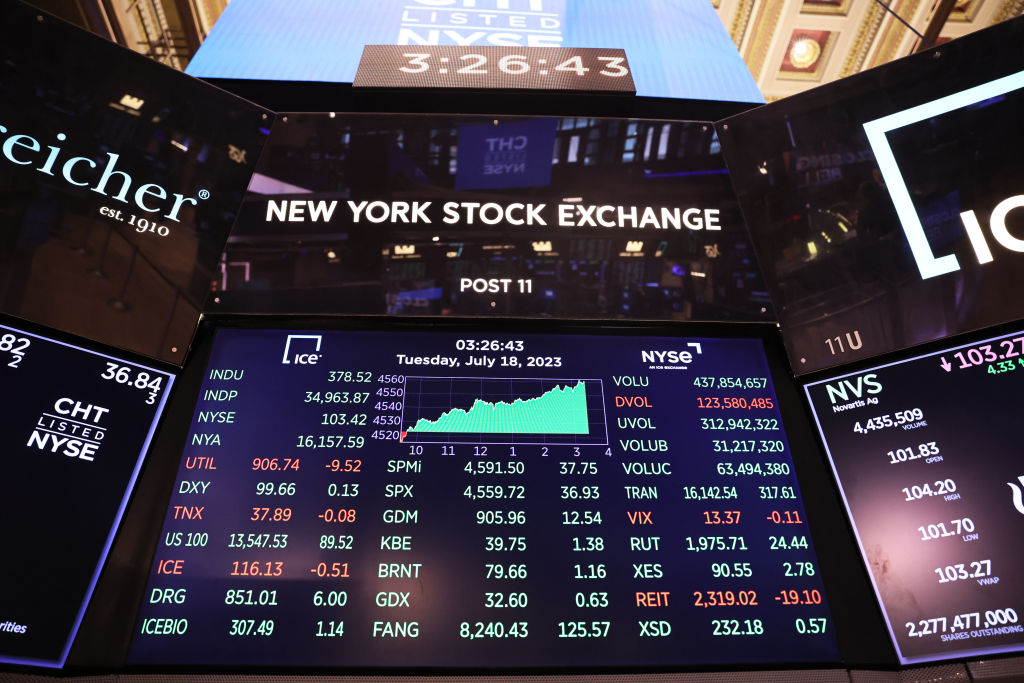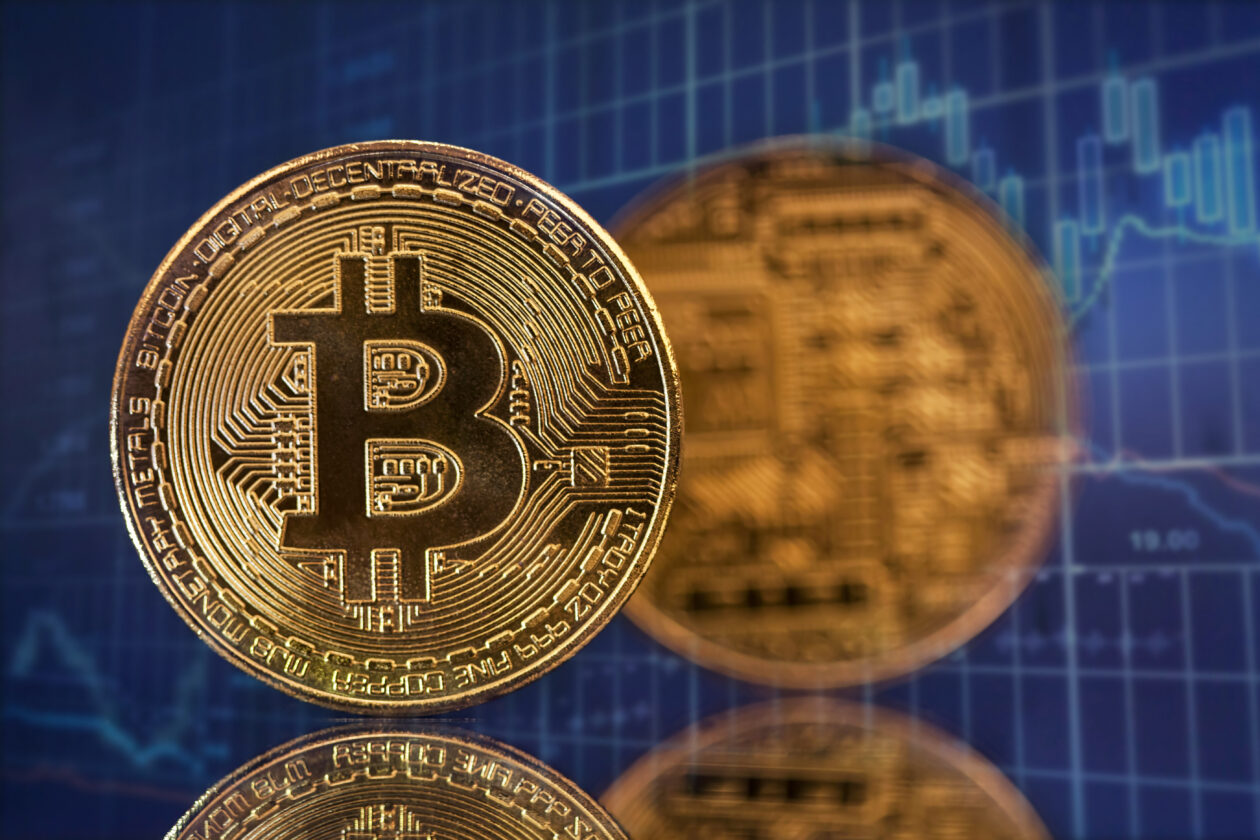Bitcoin rose on Thursday morning in Asia to trade in the US$26,500 range. The token logged its biggest one-day increase for the past six weeks on Wednesday, making up some of the losses from last week’s nosedive. Ether also moved up to challenge the US$1,700 resistance level, while all other top 10 non-stablecoin cryptocurrencies traded higher. The rise across cryptocurrencies mirrored a rally in the U.S. equity market on Thursday. S&P Global’s purchasing manager’s index for August showed a slowdown in the U.S. economy, mitigating inflation and rate hike concerns.
Solana’s SOL led the crypto winners after Solana Pay announced a partnership with Shopify to allow USDC payments on the e-commerce platform. The Forkast 500 NFT index fell as OpenSea’s decision to stop enforcing creator royalties continues to impact the market. Meanwhile, U.S. AI chipmaker Nvidia released a better-than-expected earnings report which drove a 6% rise in the firm’s shares and a boost for U.S. equities.
Cryptos benefit from Wall Street gains
Bitcoin rose 2.23% in the last 24 hours to US$26,510.04 as of 07:20 a.m. in Hong Kong, but lost 8.11% for the week, according to CoinMarketCap data. The world’s leading cryptocurrency reached a seven-day high of US$26,786.90 on Wednesday, a jump of over 3.7% from its daily low of US$25,806.99.
The rise in Bitcoin came on the back of a Wall Street rally. The S&P 500 and Nasdaq Composite posted gains of more than 1% at close of trading Wednesday. That followed the release of S&P Global’s flash U.S. Composite PMI index — a measurement of economic activity in both the manufacturing and service sectors.
The index showed that economic growth in August was close to stalling. Investors were hopeful that a slowdown in consumer spending could lead the U.S. Federal Reserve to pause its cycle of interest rate increases — good news for the crypto market playing out in today’s price increases.
CoinGlass data showed total Bitcoin liquidations at US$39.08 million over the past 24 hours. That included US$9.65 million of long positions — positions where investors bet the cryptocurrency price will rise.
It was the first time since August 20 that liquidations on Bitcoin short positions — which totaled US$29.43 — surpassed long position liquidations, indicating an improvement in investor sentiment.
Like Bitcoin, Ether gained. It rose 3.04% to US$1,681.25 but was still down 7.06% over the past seven days.
Bitstamp, a Europe-based crypto exchange, revealed Wednesday it will stop providing Ether staking services to U.S. customers from September 25, citing “current regulatory dynamics” in the country. The exchange previously announced it would suspend trades of seven cryptocurrencies declared securities by the U.S. Securitees and Exchange Commission (SEC) from August 27.
All other top 10 non-stablecoin cryptocurrencies traded higher over the past 24 hours. Solana’s SOL token led the winners, jumping 5.35% to US$21.61. But it was still down 5.23% for the week.
Solana Pay, a free-to-use payment protocol built on the Solana blockchain, announced a partnership with Canada-based e-commerce platform Shopify on Wednesday. The partnership will allow Solana Pay users to use USDC stablecoin for online shopping without intermediary fees. The protocol will also consider adding other payment options such as SOL and BOND in the future, TechCrunch reported on Wednesday.
The total crypto market capitalization rebounded 2.53% to US$1.07 trillion. Trading volume rose 10.71% to US$35.37 billion.
NFT market not at rock bottom yet
The main Forkast 500 NFT index dropped 1.11% over the past 24 hours to 2,271.35 as of 10:30 a.m. in Hong Kong, down 7.48% for the week. Forkast’s Ethereum and Cardano NFT indexes also logged losses, while the Solana and Polygon indexes moved up.
The Forkast 500 has posted a loss of 44.87% since the start of the year. But the index still has room to fall, Forkast Labs NFT strategist Yehudah Petscher said in a video posted to YouTube Wednesday.
“Last year from the start of the year to the end of the year, the market lost over 75% of its value, meaning we have much further to fall. Possibly a 30% (drop) or more,” Petscher said.
However, all is not lost, as rising transactions indicate the potential for industry growth.
“NFTs are dead? Someone’s lying to you,” Petscher tweeted on Wednesday. “Total sales are similar to early/mid 2021 levels, but the number of buyers/sellers are near 2022 levels. Transactions hit an all-time high too with 3,701,251 last week.”
Total NFT trading volume dropped 11.20% in the past 24 hours to US$12.92 million. Volumes on the Ethereum and Polygon blockchains dropped, while Solana, Bitcoin and Cardano volumes edged up, according to data from CryptoSlam.
“Overall the OpenSea royalty policy is still having an impact on the market. Transactions have been declining, total sales are down and average sales price is up,” said Petscher.
“The higher average sales price lately indicates expensive NFTs being sold, but these are typically at a loss these days,” he added.
OpenSea, one of the world’s leading NFT marketplaces, announced last week it would stop enforcing royalties — a major source of income for NFT creators — from Aug. 31.
In response to the OpenSea announcement, rival NFT marketplace Rarible said on Wednesday it will continue supporting royalties. It will also stop aggregating orders from the OpenSea, LooksRare and X2Y2 marketplaces, all of which have stopped enforcing royalties.
“Decentralization offers the opportunity to dispel the stigma of the ‘starving artist,’ and enable the continued growth of projects through true ownership and ongoing earnings,” said Alex Salnikov, co-founder of Rarible, in a statement posted on Twitter.
“We stand in solidarity with creators and artists. That’s why we will no longer support marketplaces that neglect royalties,” he added
After the announcement, Rarible experienced a 310.85% surge in 24-hour trading volume to US$34,000 as of 11:00 a.m. in Hong Kong. That’s still only a fraction of OpenSea’s 24-hour volume of US$2.19 million — a 8.82% drop, according to DappRadar data.
“I don’t think it moves the needle one way or another, but now it’s time for collectors and creators to put their money where their mouth is,” said Petscher in Wednesday’s YouTube video.
“If creators feel strongly that royalties are necessary, they are gonna mint on Rarible, they are gonna partner with Rarible. And the same goes to collectors,” he said.
Ethereum-based Bored Ape Yacht Club (BAYC) topped the 24-hour sales volume for NFT collections. It fell 50.91%% in the past 24 hours to US$1.34 million. Mythos Chain-based DMarket and Ethereum-based Sorare placed second and third in the ranking.
Nvidia gives global equities a boost

U.S. stock futures were trading higher as of 11:40 a.m. in Hong Kong with the tech-heavy Nasdaq posting a 1.30% gain. The three major U.S. indexes closed higher at the end of regular session trading Tuesday.
Main stock indexes across Asia also went higher on Thursday morning. China’s Shanghai Composite Index, Hong Kong’s Hang Seng, South Korea’s Kospi and Japan’s Nikkei all logged gains.
Financial intelligence corporation S&P Global released its flash U.S. composite PMI index on Wednesday. The index dropped from 52.0 in July to 50.4 in August — the weakest upturn in economic activities since February 2023.
“A near-stalling of business activity in August raises doubts over the strength of US economic growth in the third quarter,” Chris Williamson, chief business economist at S&P Global Market Intelligence, said in Wednesday’s report.
“The survey shows that the service sector-led acceleration of growth in the second quarter has faded, accompanied by a further fall in factory output,” he added.
Meanwhile, the flash composite PMI index in the euro zone fell from 48.6 in July to 47.0 in August. That’s the lowest reading since November 2020, according to the Hamburg Commercial Bank on Wednesday.
“In reaction to the (PMI) data, government bond yields have fallen sharply across the board, including at the front end due to stronger expectations that the ECB and Fed are now more likely to keep rates unchanged,” Mohamed A. El-Erian, an adviser to Germany-based financial services firm Allianz, tweeted on Wednesday.
The U.S. interest rate is now between 5.25% and 5.50%, the highest level in the past 22 years. The CME FedWatch Tool predicts a 13.5% chance for a 25-basis-point rate hike at the Fed’s next meeting in September, down from 15% on Wednesday.
To receive further insights into the Fed’s future monetary policies, investors await Fed Chair Jerome Powell’s opening speech at the Jackson Hole Economic Symposium on Friday. Central bank leaders from across the world will attend the Fed-held annual summit.
Elsewhere, U.S. AI chipmaker Nvidia reported second-quarter revenue of US$13.51 billion on Wednesday, an annual jump of over 100%. The firm also forecast revenue of US$16 billion for the three months to the end of October, higher than the analysts’ expectation of US$12.5 billion.
The share price of Nvidia closed 3.17% higher on Wednesday, and reached an all-time high of over US$517 in extended trading on Thursday morning in Asia.
“(Nvidia’s results show) that betting on AI is paying off today,” Thomas Monteiro, senior analyst at financial website Investing.com, told Bloomberg. “This is a big deal because it validates the narrative that has been propping tech stocks in general this year.”
In Asia, South Korea’s central bank kept its base rate unchanged at 3.50% on Thursday. The country’s annual inflation rate sits at a two-year low of 2.26%.
(Updates with equity section.)





